Terracotta Soldiers, Xi’an – Everything You Need to Know Before You Visit
- Jenn & Leon

- Sep 17
- 15 min read
Updated: Dec 23
The Terracotta Soldiers of Xi’an are one of the greatest archaeological discoveries in the world.
Buried for over 2,000 years beneath the soil of Shaanxi Province, these life-sized warriors were built to guard the tomb of China’s first emperor, Qin Shi Huang.
Today, they stand as both a symbol of ancient craftsmanship and a must-see experience for anyone visiting Xi’an.

On our trip, we joined a guided tour during the peak holiday season in August, and the experience was unforgettable for all the right reasons—and some of the frustrating ones too.
From the sheer scale of the army to the overwhelming crowds, visiting the Terracotta Army is as much about preparation as it is about wonder.
In this post, we share the highlights of the Terracotta Army, explore its history and cultural significance, explain how it was made, and guide you through the site and its excavation.
You’ll also find our personal travel tips, fascinating facts, a helpful FAQ, and our honest experience rating to help you plan your own visit.

Highlights of the Terracotta Soldiers
Visiting the Terracotta Soldiers is both a historical journey and a travel experience that leaves a lasting impression.
The site combines the wonder of ancient craftsmanship with the very modern challenge of navigating one of China’s busiest tourist attractions.
For us, this wasn’t just another stop on the itinerary—it was one of our biggest travel dreams.

We had just come from Göbekli Tepe in Turkey, the oldest known temple in the world, and to follow that by standing before the Terracotta Soldiers in Xi’an felt surreal.
As huge fans of historic places, it was almost like a pilgrimage. Jenn, in particular, has been fascinated by Chinese history and the Terracotta Warriors for years, so finally seeing them in person was a powerful and long-anticipated moment.
● The Terracotta Soldiers are part of the vast mausoleum of Qin Shi Huang, the first emperor of a unified China, dating back to around 210 BCE.
● Over 8,000 life-sized warriors, along with horses and chariots, have been unearthed, each with unique facial features and remarkable detail.
● Pit 1 is the largest and most impressive, holding thousands of soldiers in battle formation, while Pits 2 and 3 reveal different military units and rare complete figures.
● The site was only discovered in 1974 by local farmers, making it one of the most extraordinary archaeological finds of the 20th century.
● A visit today is both awe-inspiring and overwhelming, with heavy crowds, long walks, and limited facilities, so preparation is key to enjoying the experience.
While the Terracotta Army is a symbol of ancient power and belief, it is also a reminder of how history continues to draw us in.
Standing face-to-face with this silent army is an unforgettable moment, even if the modern-day realities—heat, queues, and crowds—test your patience along the way.
History of the Terracotta Army
The Terracotta Army was commissioned by Qin Shi Huang, the first emperor of a unified China, who ruled from 221 to 210 BCE.
Determined to protect himself in the afterlife, he ordered the construction of an underground army to guard his vast mausoleum near Xi’an.
Ancient historian Sima Qian wrote that the project began soon after Qin ascended the throne at just 13 years old and continued for nearly four decades, involving hundreds of thousands of workers.
The mausoleum complex itself is colossal, stretching over 50 square kilometers.
At its heart lies the still-unopened tomb of Qin Shi Huang, which remains sealed out of concern for preservation.
The Terracotta Warriors stand in surrounding pits as a protective force, each crafted with astonishing individuality—from facial expressions and hairstyles to armor and weaponry.
This grand project reflected the emperor’s beliefs in immortality and the afterlife.
Just as real soldiers defended his empire in life, the terracotta figures were meant to continue their service after death.
The army also symbolized Qin Shi Huang’s absolute power and the resources he could command, with artisans, laborers, and possibly prisoners of war all contributing to its creation.
When the site was rediscovered in 1974 by local farmers digging a well, it was hailed as one of the greatest archaeological finds of the 20th century.

Excavations revealed thousands of figures arranged in strict military formation, confirming ancient texts that had long been dismissed as myth.
Today, the Terracotta Soldiers remain both a testament to the Qin Dynasty’s ambition and a vivid glimpse into China’s ancient worldview.
On our own visit, much of this history was explained during the bus ride by our English-speaking guide.
Hearing the story told while driving through modern Xi’an gave it extra weight, as we realized just how much the city’s past and present are intertwined.

ADVERTISEMENT
How the Terracotta Warriors Were Made
The craftsmanship behind the Terracotta Warriors is one of the most remarkable aspects of the site.
Each figure was created from local clay, shaped in workshops, and fired in kilns before being assembled into life-sized soldiers.

Artisans used a combination of molds for body parts and hand-carving for the finer details, which is why no two faces are exactly alike.
Hairstyles, armor, and even the positioning of hands vary to reflect rank and role, from infantrymen to cavalry and generals.

Originally, the warriors were painted in vivid colors using natural pigments, but exposure to air after excavation caused most of the paint to flake away.
Today, only traces remain, giving us a tantalizing glimpse of how striking the army must have looked when it was first completed.
Alongside the figures, archaeologists also uncovered bronze weapons such as swords, spears, and crossbows, many of which remain sharp and well-preserved after two millennia.
Our own tour began with a stop at a museum and workshop dedicated to explaining these techniques.
Here, we saw demonstrations of how the warriors were built and learned that replicas are still produced using similar methods.
It was fascinating to see the artistry up close, even though the largest part of the museum was the souvenir shopping area, which reminded us how commercialized the discovery has become.
Still, this first stop provided useful context and made it easier to appreciate the complexity of what awaited us in the burial pits.

The Site and Excavation
The Terracotta Army site covers a vast area just outside Xi’an, with four main pits that have been excavated to varying degrees.
The figures are arranged in strict military formations, reflecting the structure of Qin Shi Huang’s real army.
⪢ Pit 1

Pit 1 is the largest and most impressive, stretching over 200 meters long and housing thousands of infantry soldiers and horses in neat rows.
This is the iconic view that most visitors recognize, and it’s overwhelming in scale.
For us, finally stepping into this hall was mesmerizing, though the sheer number of people crowding the narrow walkways made it difficult to take it all in.
⪢ Pit 2

Pit 2 contains cavalry, chariots, and archers, offering more variety in the types of soldiers represented, though it is less visually dramatic than Pit 1.
⪢ Pit 3
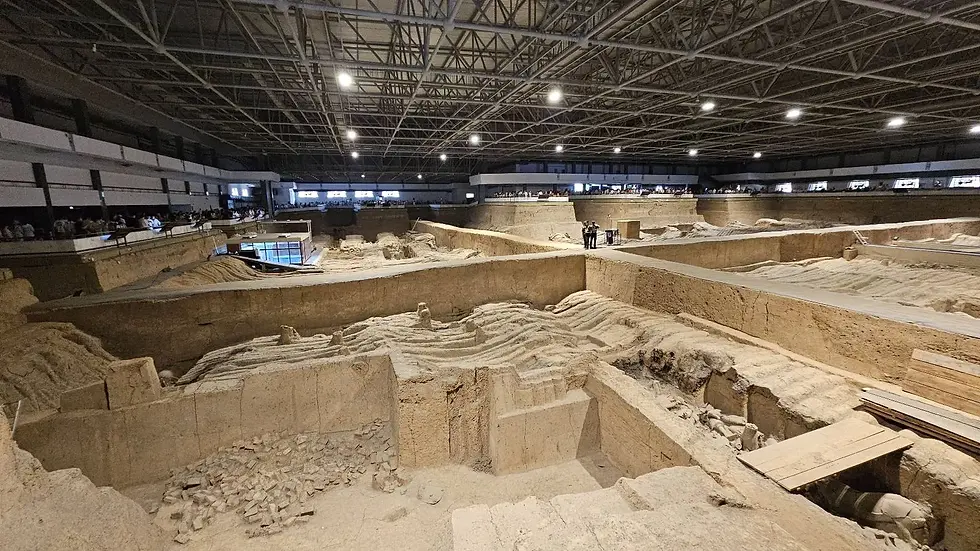
Pit 3 is thought to have been the command post, with fewer figures but significant because it contained some of the only complete warriors discovered to date, undamaged and preserved in glass cases.
⪢ Pit 4
Pit 4 was left largely empty and is believed to have been abandoned during construction.
Today, much of it has been recovered to protect the fragile remains, and there are no immediate plans for further excavation.

The site was first uncovered in 1974 when local farmers digging a well struck upon fragments of clay.
What they had stumbled across turned out to be one of the greatest archaeological discoveries of the 20th century.
Since then, archaeologists have unearthed over 8,000 warriors, along with 670 horses and 130 chariots, though only a fraction of the complex has been fully explored.
Walking between the pits during our tour was both fascinating and exhausting. Even early in the morning, the crowds were intense, and the heat in August was stifling.
At times, it felt almost impossible to get a clear view, with thousands of people jostling for space.
Still, once we made it to the edge and looked down at the warriors, the impact was unforgettable.
Each figure seemed frozen in time, a silent reminder of the emperor’s ambition and the craftsmanship of those who served him.
And while the warriors are breathtaking on their own, they’re only part of the story—the emperor’s actual tomb remains sealed beneath a massive burial mound nearby.
Read on for the mysteries and unanswered questions that still surround this ancient site.

Cultural Significance of the Terracotta Soldiers
The Terracotta Warriors are more than an archaeological wonder; they are a defining symbol of China’s history and identity.
Commissioned by Qin Shi Huang, the first emperor of a unified China, the army reflects the immense power of the Qin Dynasty and its influence on shaping the nation’s future.
Qin’s unification of the warring states, introduction of standardized currency, weights, and measures, and even the early Great Wall all laid the foundations for the country we know today.
The warriors stand as a physical embodiment of his ambition to extend that legacy into eternity.
The site also offers a unique glimpse into ancient Chinese beliefs about the afterlife.

Just as kings and rulers elsewhere in the world were buried with treasures or servants, Qin Shi Huang chose an entire army of clay soldiers to protect him.
This blending of military might and spiritual belief underscores how deeply intertwined governance, religion, and immortality were in ancient China.
For modern China, the Terracotta Army has become a national treasure and a source of immense pride.
Since its discovery, it has drawn tens of millions of visitors from around the world and played a central role in putting Xi’an on the global tourism map.
In fact, the sheer number of tourists today is part of the story.
On our own visit, we were struck not only by the warriors themselves but by the scale of the crowds—thousands of people streaming through narrow walkways, cameras raised, all eager to witness the same moment in history.
It was a reminder that while the site is a relic of the past, it continues to shape the present through its cultural and economic impact.
The Terracotta Soldiers were declared a UNESCO World Heritage Site in 1987, cementing their place as one of the most important archaeological sites in the world.
They stand alongside other ancient wonders like the Pyramids of Giza and Machu Picchu as landmarks that connect us to humanity’s shared history and enduring fascination with the past.
Mysteries and Archaeology
Even after decades of excavation, the Terracotta Army continues to hold many secrets.
Archaeologists have uncovered thousands of warriors, horses, and chariots, yet experts believe much more remains buried beneath the earth.
Only a fraction of the vast mausoleum complex has been explored, and work proceeds cautiously to avoid damaging the fragile relics.
The greatest mystery of all is the unopened tomb of Qin Shi Huang himself.
Ancient texts describe rivers of mercury flowing inside, representing the cosmos, and recent soil samples near the burial mound show unusually high mercury levels, supporting the legend.
Modern technology has not yet provided a safe way to explore the chamber without risking irreparable damage to its contents.
For now, the emperor’s resting place remains sealed, adding to the sense of wonder and speculation that surrounds the site.
Another ongoing challenge is preservation. The warriors were originally painted in brilliant colors, but exposure to air caused most of the pigments to fade and flake off within hours of excavation.
This dilemma has led archaeologists to halt or delay further digs until better conservation techniques are developed.
Pit 4, for example, was largely empty and has since been re-covered to protect its fragile remains.
There are also debates about the human cost of the project. Historical sources suggest that up to 700,000 workers were involved, including artisans, laborers, and possibly prisoners of war.
Many may have lost their lives during construction, and some scholars believe entire workshops were sealed inside to keep the secrets of the mausoleum hidden.
These stories reflect both the scale of Qin Shi Huang’s ambition and the darker side of his absolute rule.
Standing among the crowds today, it is easy to forget that much of the Terracotta Army—and the emperor’s tomb itself—remains untouched.
The soldiers we see are only part of the story, a glimpse into a larger world that is still waiting to be revealed.
ADVERTISEMENT
Visiting the Terracotta Soldiers Today
Seeing the Terracotta Soldiers in person is unforgettable, but it’s not without its challenges.
The site is one of the most visited attractions in China, and with millions of tourists arriving every year, preparation makes all the difference between a rewarding experience and an overwhelming one.
⪢ Tickets and Entry
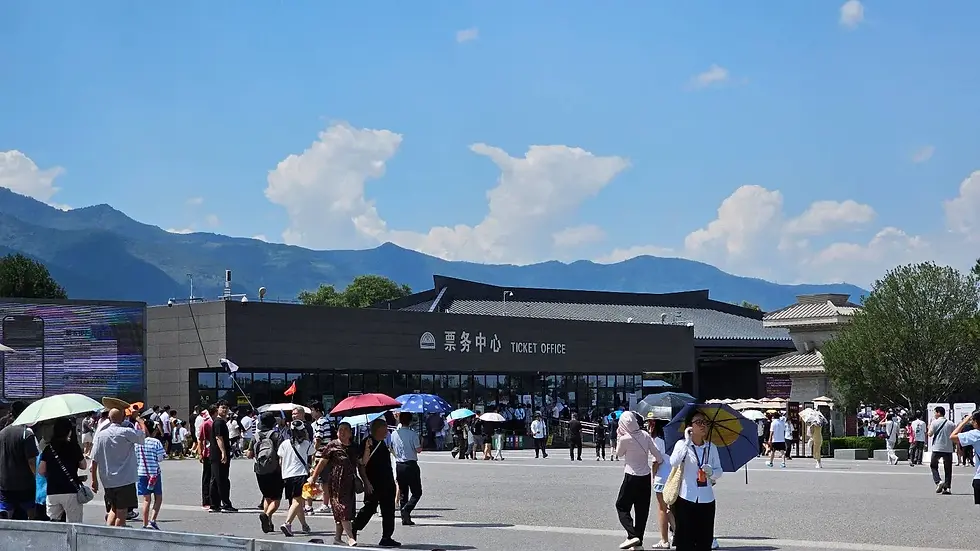
Entry is linked directly to your passport, which becomes your ticket.
This system is convenient—we used our passports not only for the Terracotta Army but also for trains and shows across China—but it does mean your most important travel document gets handled often.
We found ourselves extra cautious in keeping it safe, especially in crowded queues or in bad weather when damage was a concern.
⪢ Getting There

We visited as part of a small-group tour organized by our hotel, the Ramada by Wyndham Bell Tower.
A coach picked us up in central Xi’an and first took us to the Terracotta Army Museum and workshop, where the techniques of making the warriors were explained.
Replicas are still produced there today, and while the surrounding souvenir stalls were heavy on the commercial side, it was an interesting stop.
From there, the coach drove us out to the main mausoleum complex, with our guide sharing background on Xi’an and the history of Qin Shi Huang along the way.
Where to Stay in Xi'an
Looking for a place to stay nearby? Browse Xi'an hotel deals below to find great rates from top providers in the city.
Our map offers a user-friendly interface that allows you to zoom in and out, providing a comprehensive view of the area and enabling you to identify the most convenient hotel options based on your current location or desired destination.
⪢ Arrival and Layout

Once you arrive at the main coach park, expect a long walk—around 20 minutes—through rows of restaurants and souvenir shops before you even reach the entrance.
Our guide carried a flag on a pole so we wouldn’t get lost in the sea of thousands.
Even at 10 a.m., the site was heaving with people, and the August heat hovered around 35°C, making the walk and the wait intense.

⪢ Inside the Complex
The mausoleum area is spread across several pits, and exploring them takes around two hours.
Be aware: there are no toilets or refreshments inside the main viewing halls. Make sure to use the facilities and stock up on water before you enter.
Once inside, the layout is simple enough, but the lack of crowd control can be frustrating.
The narrow walkways around Pit 1, the most famous hall, were jammed shoulder-to-shoulder with visitors.
At times, it was almost impossible to see the soldiers unless you fought for a spot at the railing.
While this took some of the shine off the experience, the moment we finally reached the edge and looked down at the rows of life-sized figures was breathtaking.
The detail of the soldiers and horses, even stripped of their original color, was astonishing.
⪢ Group Tour Experience
Our tour continued with Pits 2 and 3 before finishing at the museum, where artifacts and some of the rare complete warriors are displayed.
While not as visually overwhelming as Pit 1, Pit 3 was fascinating for its preserved figures.

By the time we left, it was early afternoon, and the tour included a group meal at a nearby restaurant.
We sat at a large round table with a spinning centerpiece and shared traditional meat, rice, and noodle dishes.
Drinks were extra, and while the food wasn’t spectacular, it was a welcome break after hours of walking.

⪢ Best Times and Tips
The Terracotta Army is open year-round, but visiting outside of peak summer months will make for a far more enjoyable experience.
Spring and autumn are cooler and less crowded, and if you can, try to arrive as early as possible to beat the tour groups.
Comfortable shoes, water, and patience are essential. For us, the combination of awe and exhaustion defined the day.
Seeing the Terracotta Soldiers was a dream realized, but it also came with queues, heat, and moments of frustration.
With the right preparation, though, the experience is still one of the most remarkable things you can do in China.
If you’re planning your own visit, booking a guided tour can save you time and stress, especially with the crowds and ticketing system.
If you do not book through your hotel, we recommend checking out Terracotta Warriors tours on GetYourGuide for convenient options with transport and expert guides included.
Interesting Facts About the Terracotta Soldiers
Beyond the scale and spectacle, the Terracotta Soldiers are full of details that make them even more fascinating to study.
Here are some of the most remarkable facts about this ancient army:
● No two figures are identical. Each warrior has unique facial features, hairstyles, and expressions, showing incredible attention to individuality.
● The army is massive. Over 8,000 soldiers, 670 horses, and 130 chariots have been discovered so far, but experts believe even more remain buried.

● Weapons were real. Many of the soldiers carried bronze swords, spears, and crossbows that remain sharp after more than 2,000 years thanks to advanced anti-rust techniques.
● Colors once dazzled. The figures were originally painted in bright pigments such as red, green, and purple, but most flaked away when exposed to air.
● An enormous workforce. Ancient records suggest that around 700,000 laborers, artisans, and possibly prisoners of war worked on the mausoleum complex.
● One rare survivor. In Pit 3, archaeologists discovered one of the few warriors found completely intact, undamaged after more than two millennia.
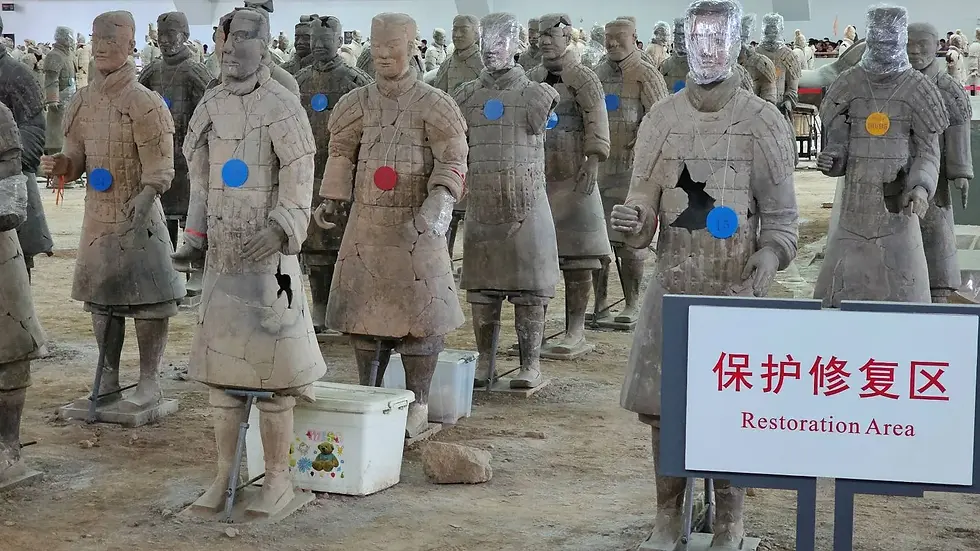
● Accidental discovery. The army was unearthed in 1974 when local farmers were simply digging a well—they had no idea they were standing above one of history’s greatest treasures.
● Strange legends. Ancient texts claim Qin Shi Huang’s tomb contains rivers of liquid mercury to mimic the stars and seas. Soil samples near the mound show mercury traces, giving weight to the myth.
All of these details highlight just how ambitious Qin Shi Huang’s project was.
Standing in front of the warriors, you begin to appreciate not only their artistic beauty but also the immense effort and organization it took to bring this silent army to life.
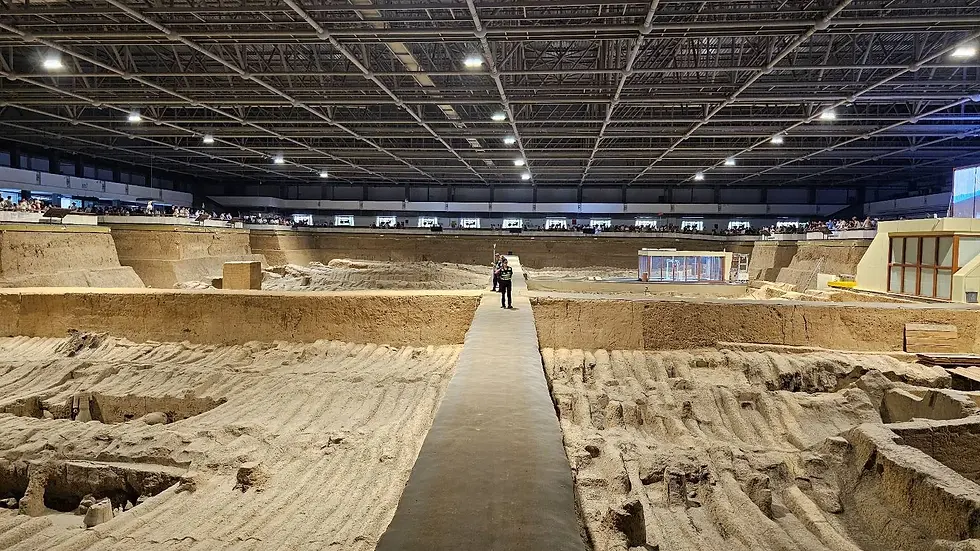
FAQs About the Terracotta Soldiers
With so much history, legend, and practical detail surrounding the Terracotta Soldiers, it’s no surprise that visitors have plenty of questions.
Here are answers to some of the most common ones:
What are the Terracotta Soldiers?
They are life-sized clay warriors built over 2,000 years ago to guard the tomb of China’s first emperor, Qin Shi Huang, and protect him in the afterlife.
How old are the Terracotta Warriors?
Construction began around 246 BCE when Qin Shi Huang became king at age 13, and the army was completed around 210 BCE.
Who discovered the Terracotta Army?
In 1974, local farmers digging a well near Xi’an uncovered fragments of the soldiers, leading to one of the greatest archaeological finds of the 20th century.
How many Terracotta Soldiers are there?
Archaeologists have unearthed more than 8,000 warriors, along with 670 horses and 130 chariots, though many remain buried.
Why are the Terracotta Soldiers all different?
Artisans used molds for basic parts but carved details by hand, ensuring each warrior has unique facial features, hairstyles, and expressions.
Were the Terracotta Soldiers painted?
Yes, they were originally painted in vivid colors like red, green, and purple. Unfortunately, most of the pigments faded or flaked away after excavation.
What can you see when visiting today?
The site has several pits: Pit 1 with thousands of infantry, Pit 2 with cavalry and archers, Pit 3 as a command post, and a museum with rare intact warriors.
How long does a visit take?
Expect to spend around two hours inside the mausoleum complex. Factor in extra time for the 20-minute walk from the parking area and possible queues.
What is the best time to visit the Terracotta Army?
Spring and autumn offer cooler weather and fewer crowds. Arrive early in the morning to avoid large tour groups, especially during summer holidays.
Can you visit the emperor’s tomb itself?
No, the main burial chamber of Qin Shi Huang remains sealed. Legends of mercury rivers and fragile preservation concerns mean it has never been opened.
The Terracotta Soldiers remain as fascinating for their unanswered questions as for the figures already revealed.
From their accidental discovery to the mysteries that still lie underground, they continue to captivate millions of visitors every year.
Our Experience Rating:
Terracotta Soldiers of Xi’an

For us, visiting the Terracotta Soldiers was not just another stop on our travels. It was one of those big travel dreams, something we had looked forward to for years.
Coming here after Göbekli Tepe in Turkey made the experience even more special—from the world’s oldest temple to one of China’s most iconic archaeological sites, it felt like a journey through time itself.
Jenn, in particular, has always been fascinated by the Terracotta Warriors, so finally standing in front of them was a deeply personal moment.
That said, the visit was far from perfect. The August heat, endless crowds, and chaotic walkways made it hard to enjoy the site at times.
Fighting for a viewing spot around Pit 1 was frustrating, and the lack of toilets or refreshments inside the complex added to the exhaustion.
The group meal at the end was a welcome break, but by then, we were drained from the sheer intensity of the day.
Despite those challenges, seeing the Terracotta Soldiers was still one of the most awe-inspiring moments of our travels.
The details of the figures, the scale of the army, and the history behind it all outweighed the discomforts.
If anything, the frustrations are a reminder of just how globally significant this site is—millions of people are drawn here for the same reason we were: to witness history frozen in clay.
Our rating: 4.5 out of 5. A dream realized, an experience never to be forgotten, and one we would recommend to anyone—but be ready for the heat, the crowds, and the patience it takes to truly appreciate this wonder of the ancient world.
Related and Useful Links
● China Travel Hub – Our complete guide to traveling in China, with tips, resources, and our blog posts.
● Ramada Bell Tower Hotel Review – Where we stayed during our visit to the Terracotta Soldiers.
● Xi’an Romance Show – Another highlight of our time in Xi’an (coming soon).
● Best eSIMs for Travel – Stay connected in China and beyond with our comparison guide.
● Travel & Lifestyle Emporium – Curated products and essentials for travelers.
● Travel Resources – Our trusted tools for booking tours, insurance, transport, and more.

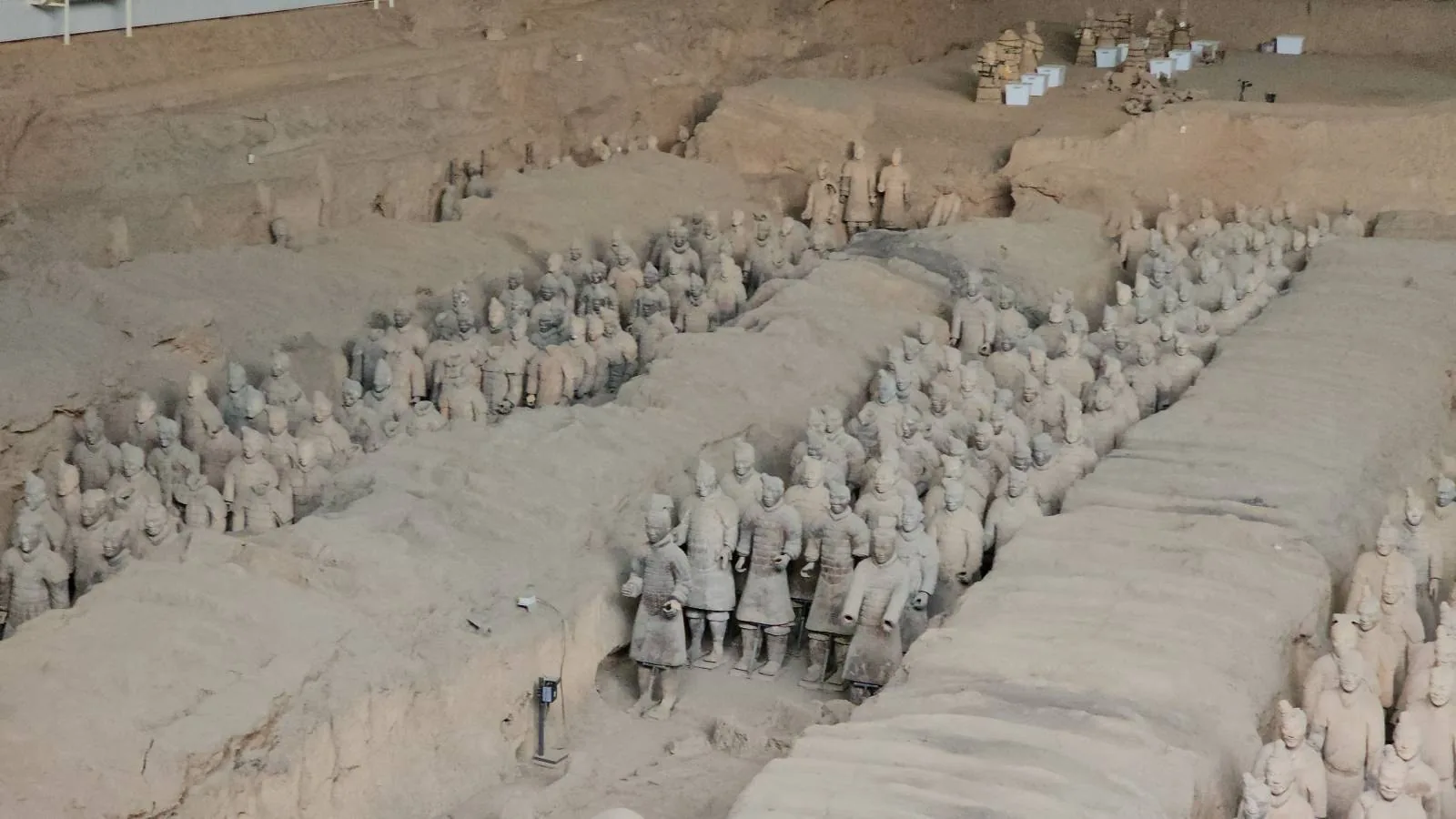

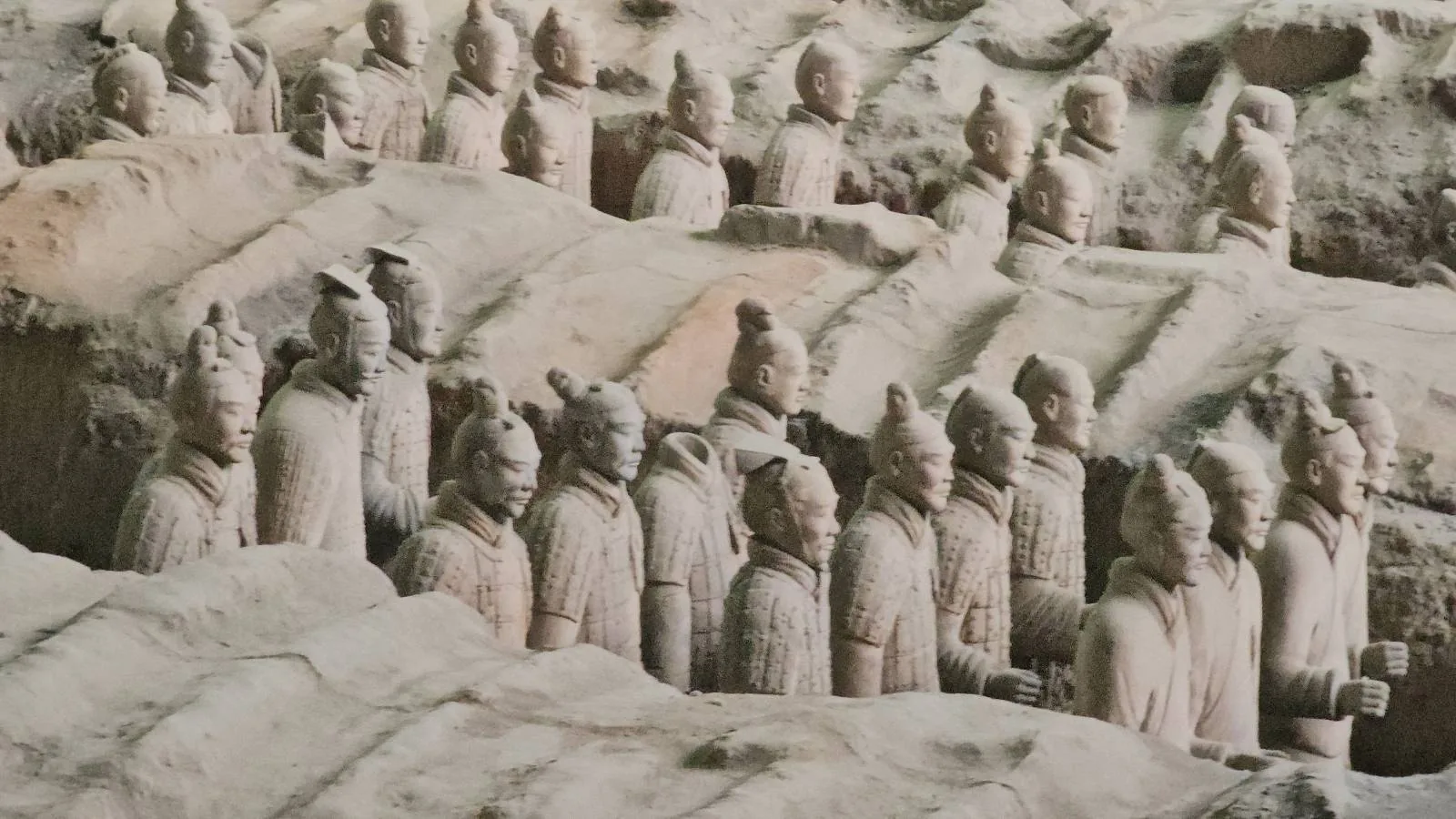
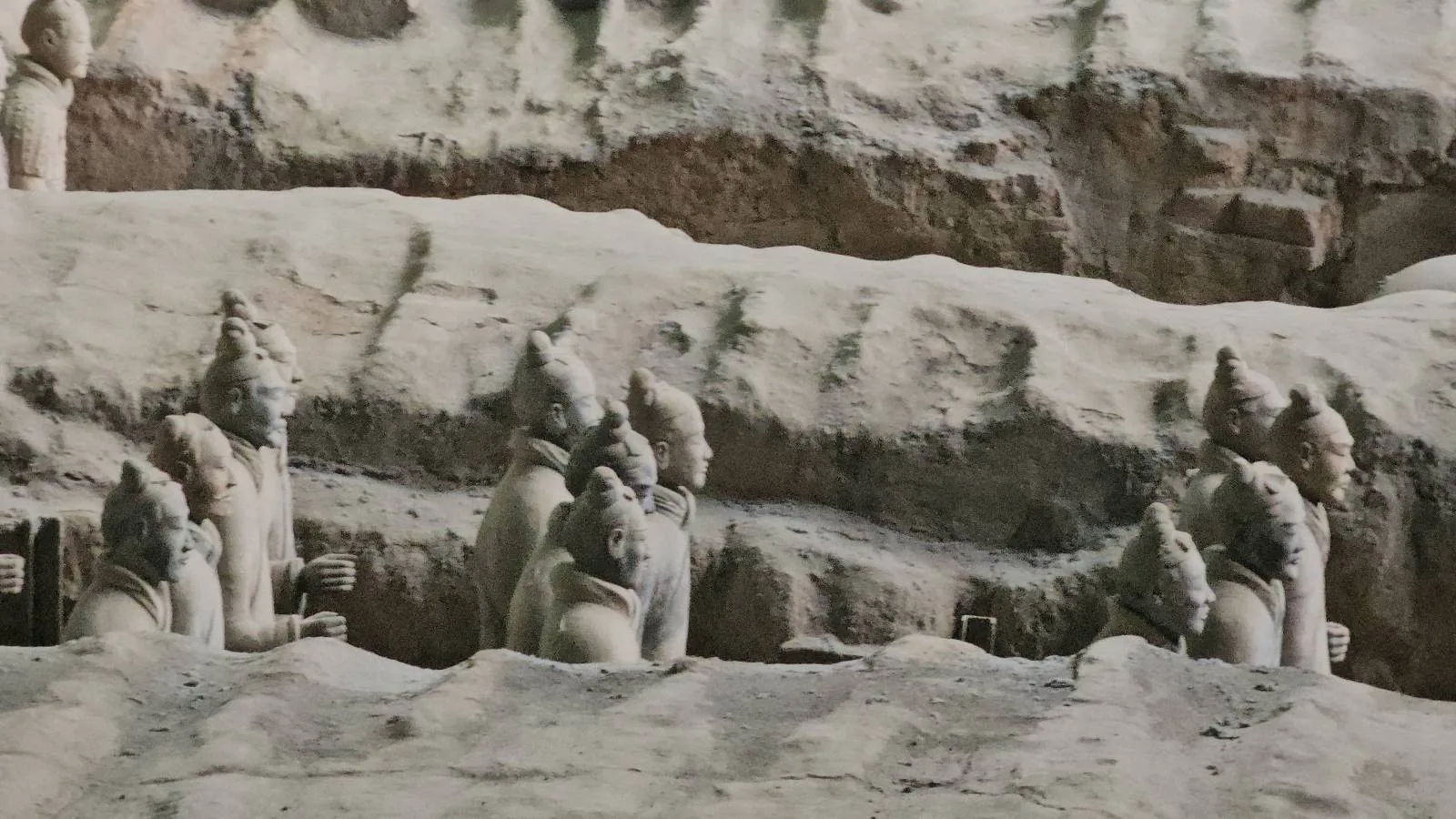
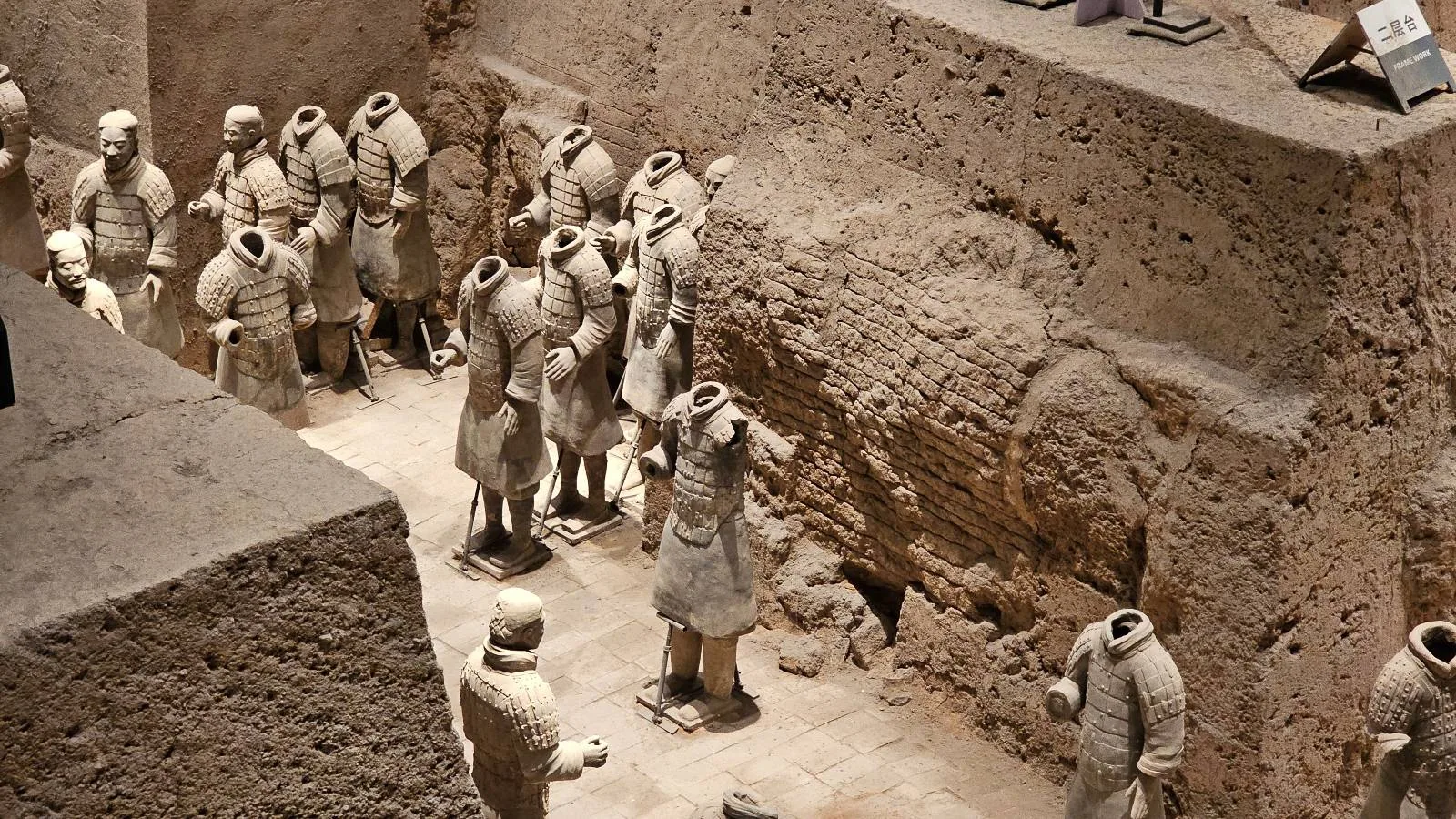
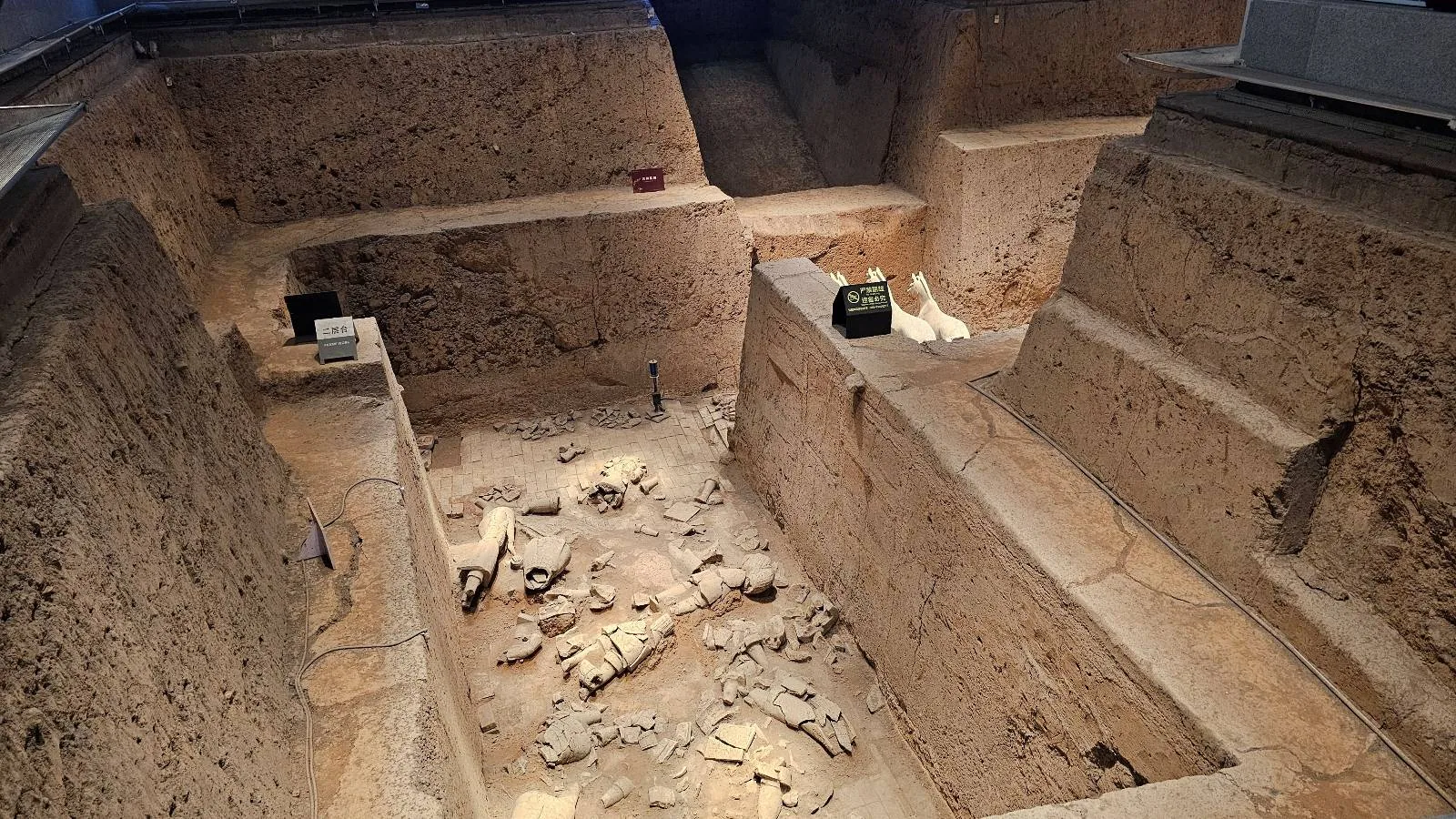

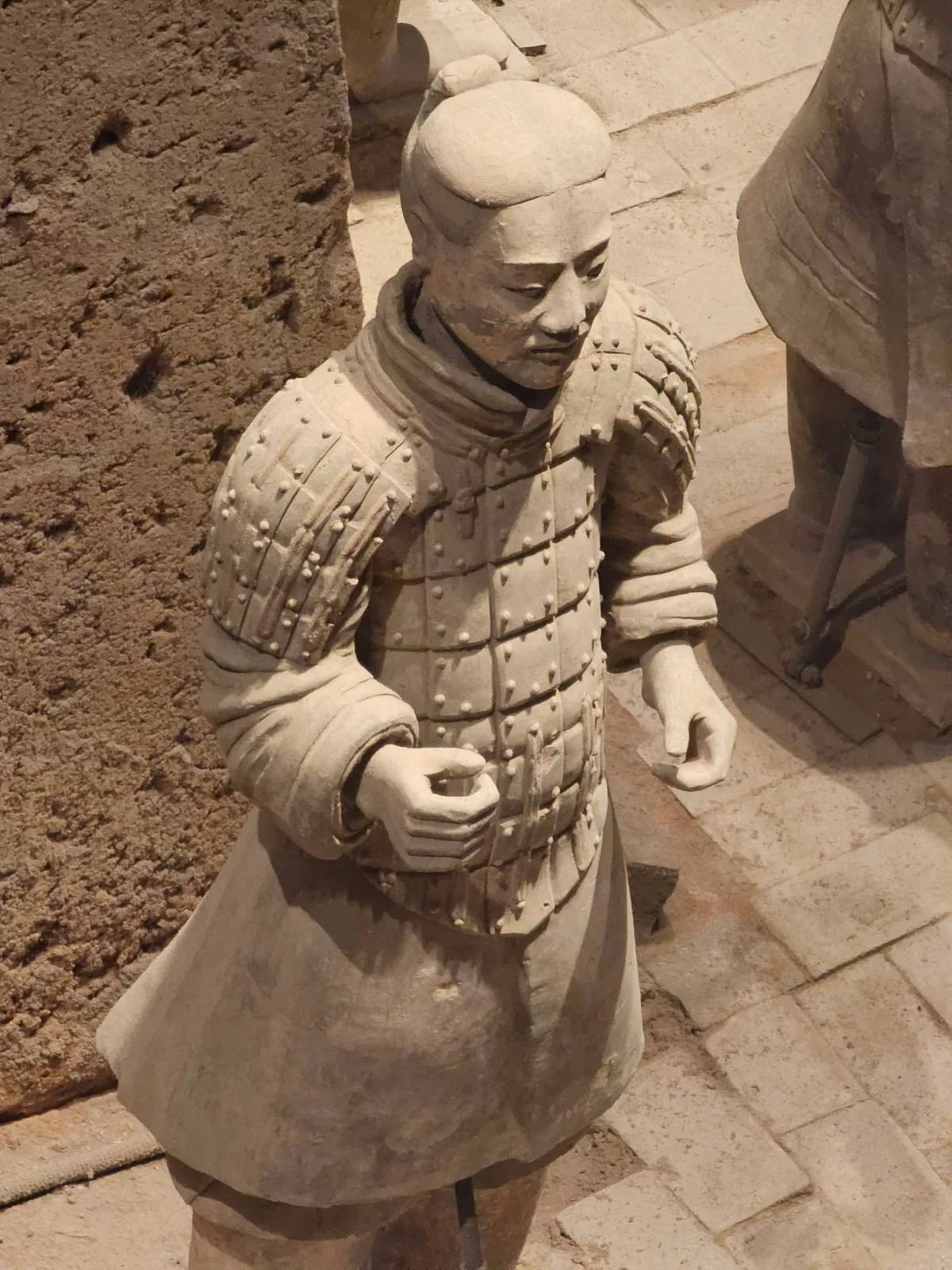

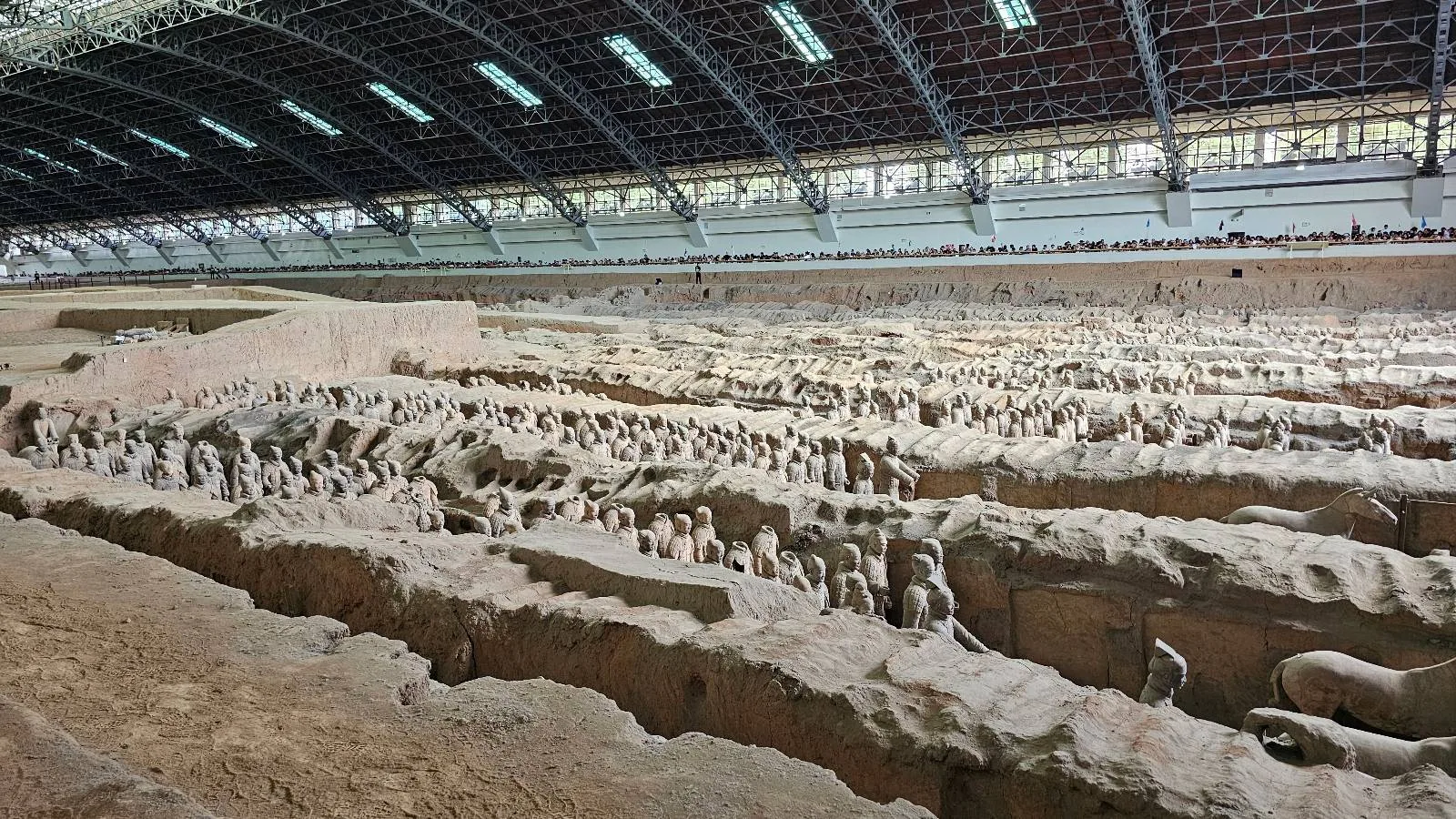
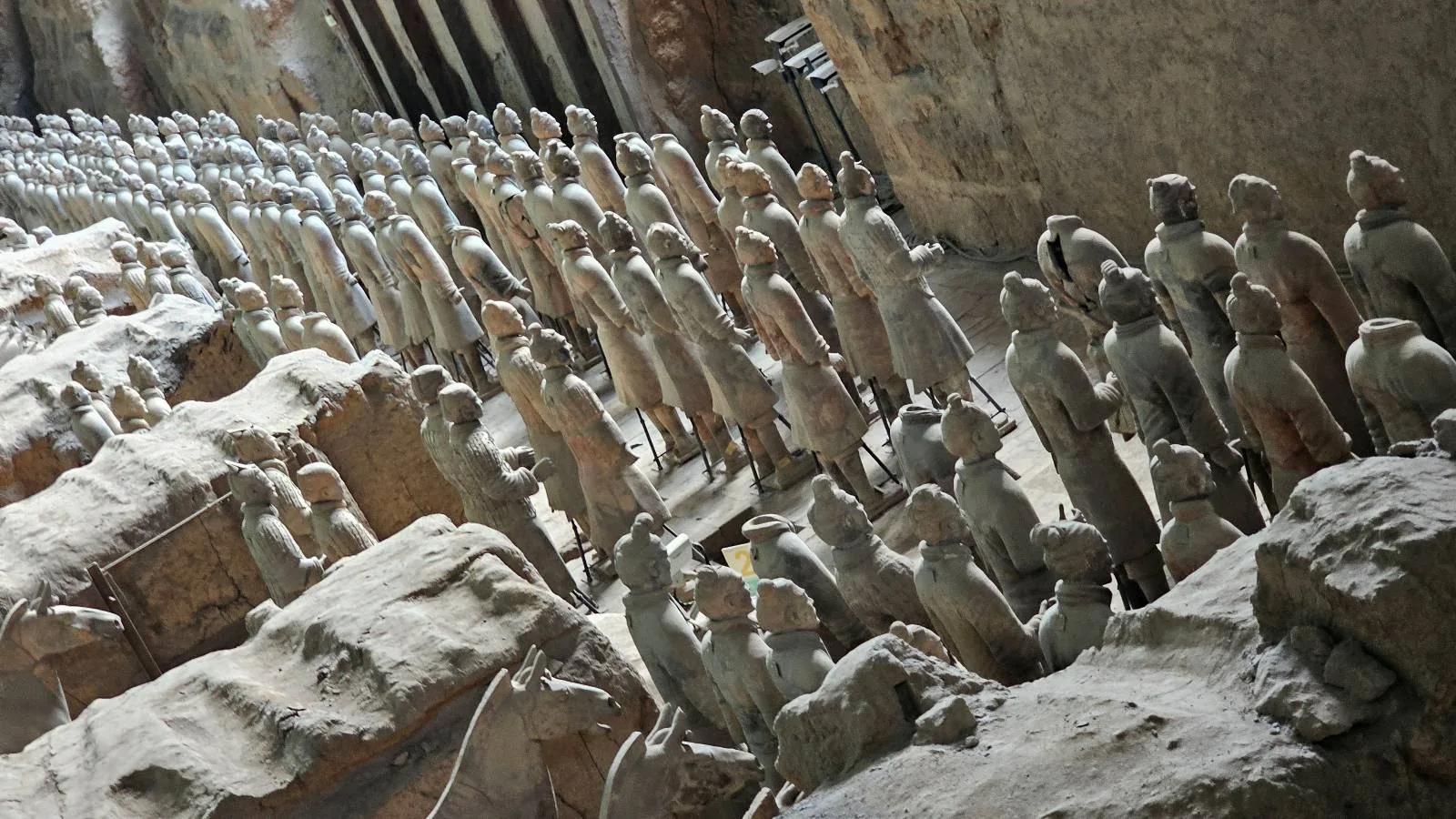


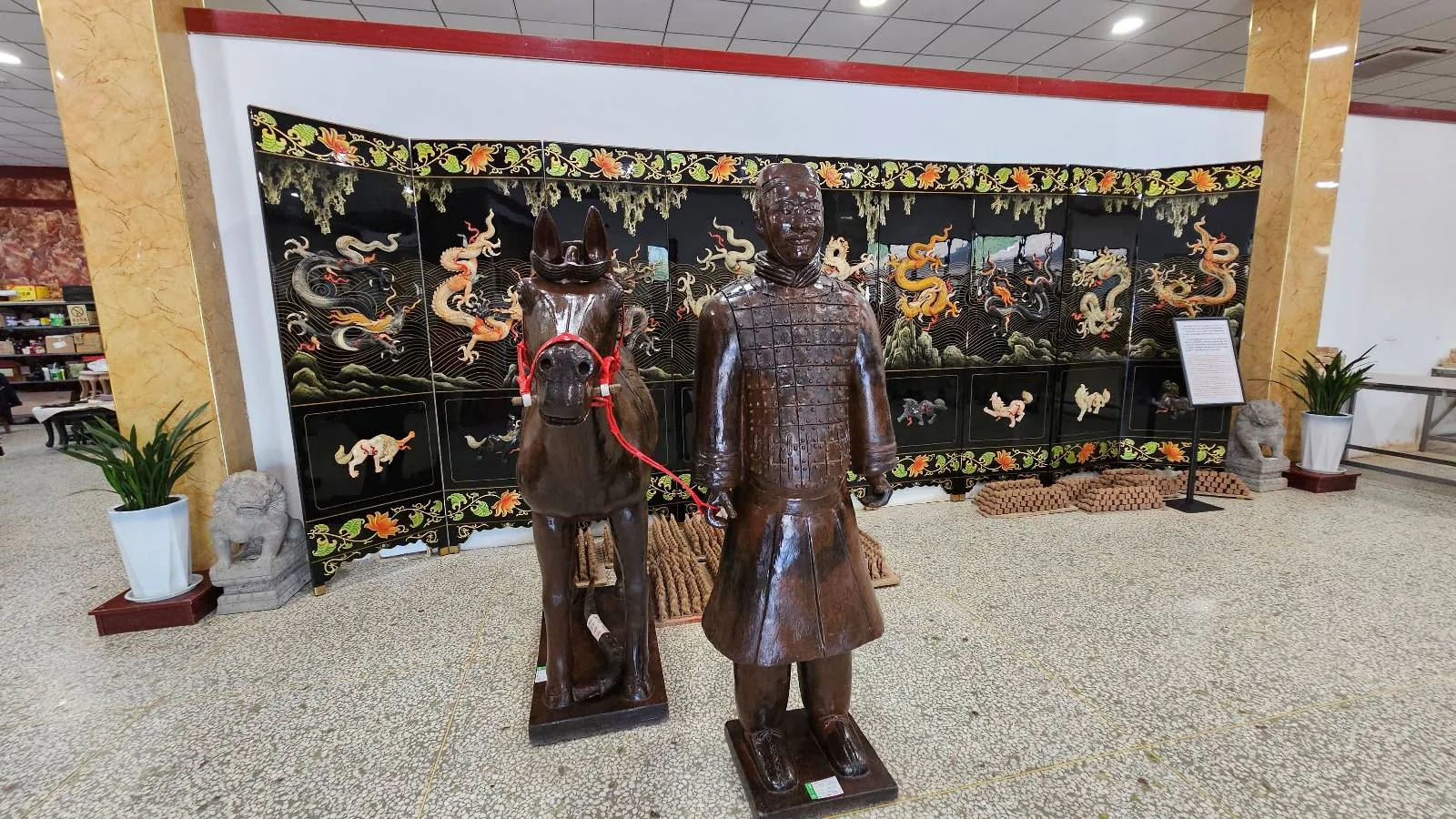

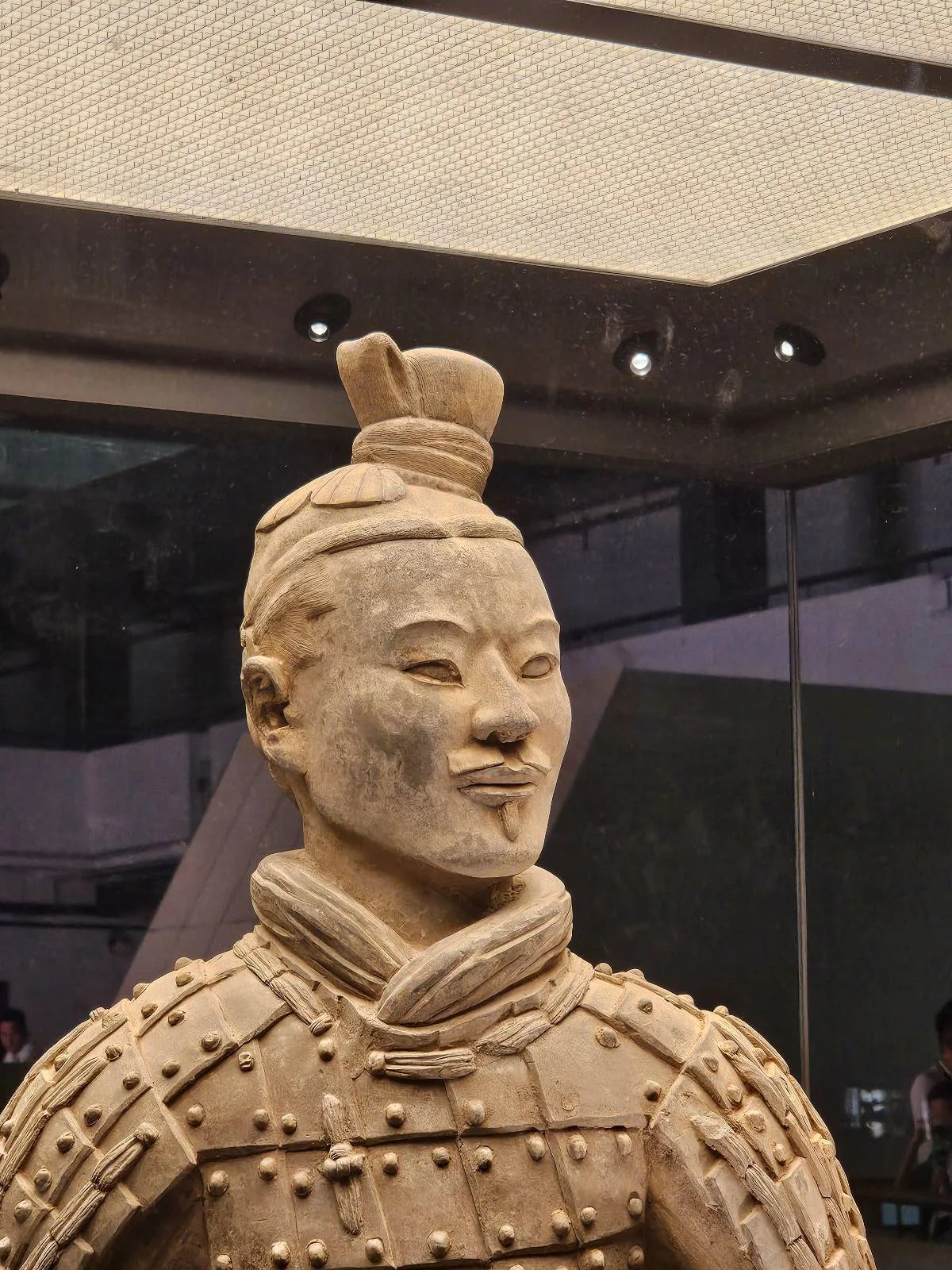
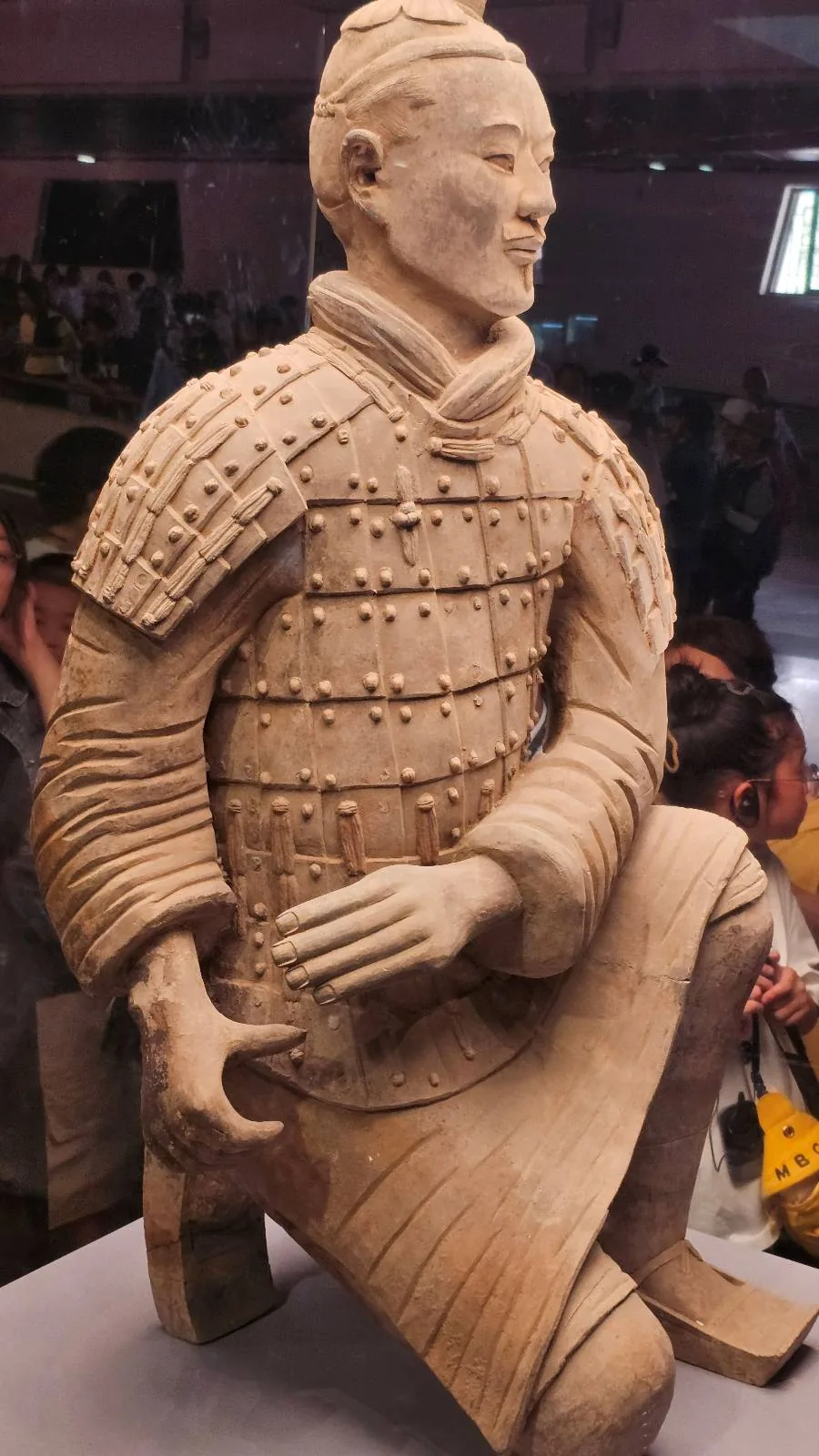


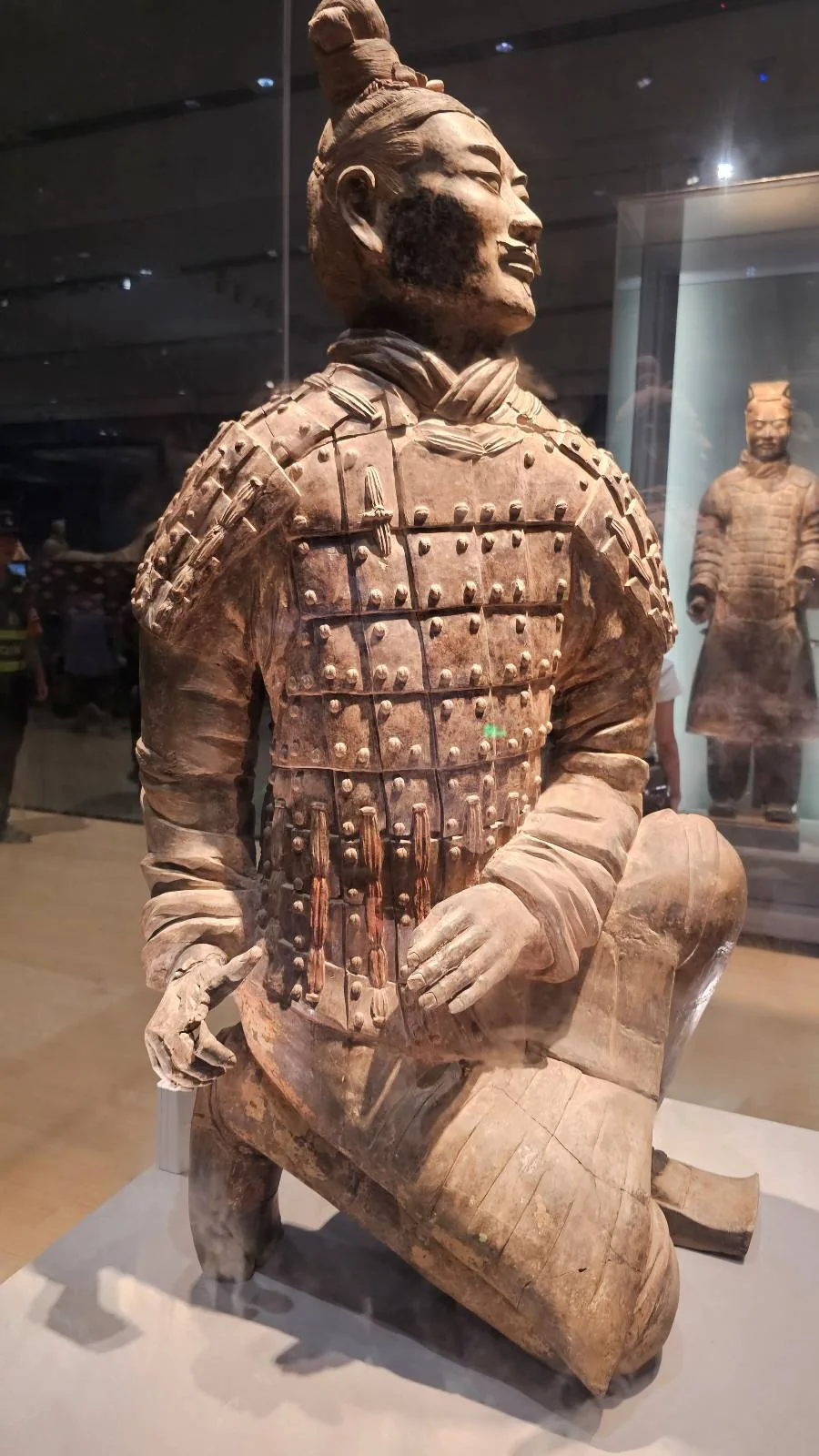



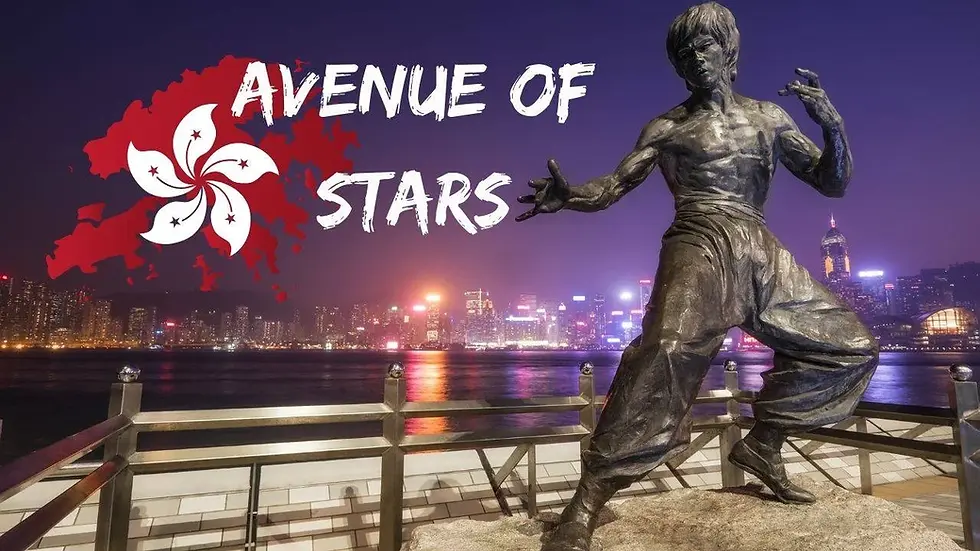



































































Comments